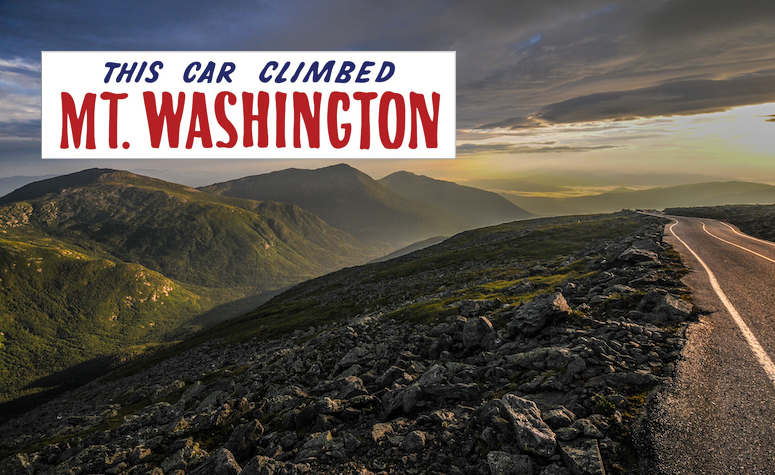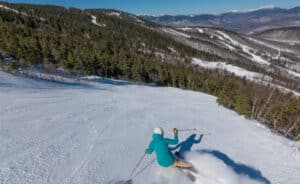
You could argue which bumper sticker is more ubiquitous throughout New England; the one boasting about your child’s performance in school on any particular month, or the one that conveys the pride that drivers feel after submitting the region’s highest point in their vehicles.
The “This Car Climbed Mount Washington” bumper sticker is a familiar memento of local lore. Sometimes lampooned (you’re bound to witness a T-shirt or two that brags about how these LEGS climbed Mount Washington), the bumper sticker is an acknowledgment of having experienced one of New Hampshire’s most popular summer attractions, all with a knowing nod to the extra challenges visitors faced while trying to navigate the 160-year-old road in its earlier days.
Mind you, for all the modern improvements that have been made over the years, the Auto Road can still be intimidating. It is a steep, narrow mountain road without guardrails, and the average grade is 12 percent. As the sign at the base of the road warns motorists, if they have a fear of heights, then this might not be the ride for them.
“Back in the day, it was a tough ride,” Lisa McCoy, Mount Washington Auto Road’s events and marketing, said. “It’s a little more cush, I would say, now because it is all paved.



